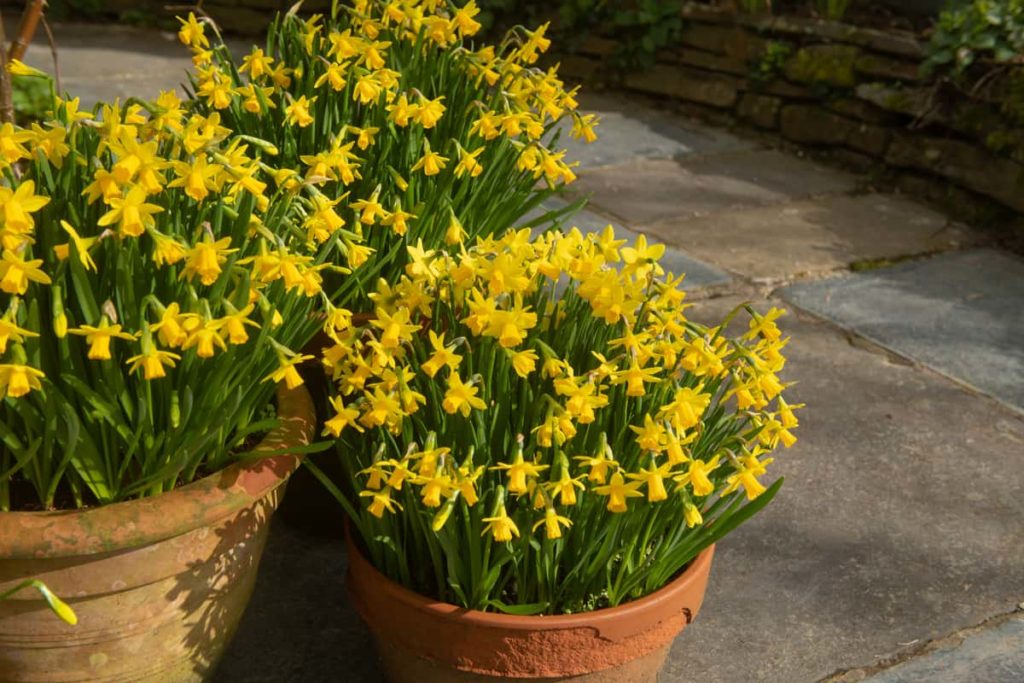
Daffodils are the quintessential spring bulb. Whether indoors or planted straight into the garden, spring is just not spring without the delicate daffodil cups swaying gently in the wind.
And with plants as popular as the daffodil comes extensive hybridization and cultivation that provides endless choice and variety.
When planting in containers, for indoor décor or patio pairings, you need the right daffodil variety.
Container daffodils are usually smaller, able to grow in space-constrained pots, and don’t mind a bit of crowding.
These fourteen cultivars do just that, returning each year with more and more blooms without hassle.
1. Ice Follies
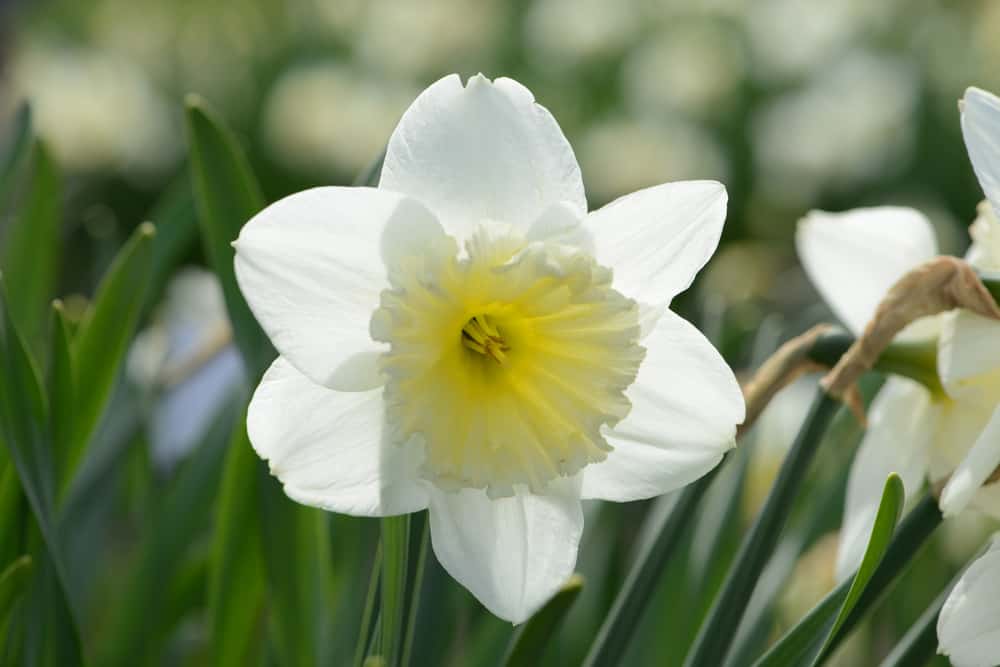
Ice Follies is an incredibly popular daffodil with many brilliant qualities. This cultivar is part of the ever-popular large-cupped daffodil grouping that tops consumer charts.
The blooms are a brilliant white, dusted with a touch of gold in the center petals. It has also won several awards, including the Royal Horticultural Society (RHS) Award of Garden Merit and the Wister Award, given by the American Daffodil Society.
While this variety may not seem ideal for containers, given that the plants grow quite tall, they do respond incredibly well to forcing, making them great for growing in individual pots indoors.
2. Tete a Tete
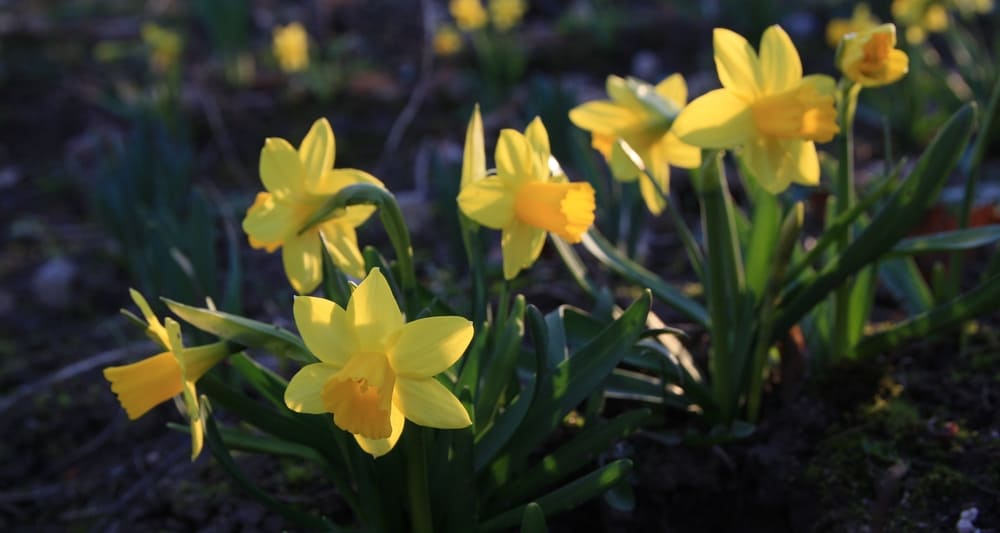
Tete a Tete is undoubtedly the most well-known miniature daffodil variety. This plant only reaches a height of around six feet and sports adorable narrow blooms atop flower stems.
Tete a Tete is also incredibly easy to grow, spreading quickly and covering your containers in short buttercup yellow flowers. Deadheading regularly will keep this daffodil flower consistently year after year.
3. Pipit
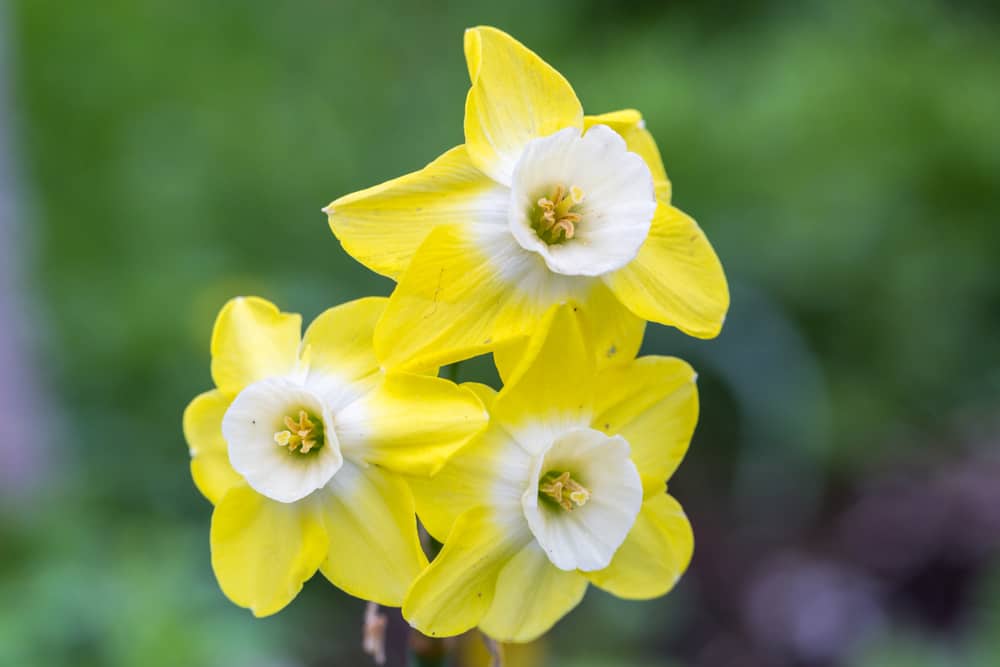
Pipit is only slightly taller than the miniature Tete a Tete, but provides plenty of interest. Unlike many other daffodils, this cultivar has cups that fade to white in the center as the flowers mature, creating a bicolor appearance.
Pipit is another RHS award winner, favored for its long blooming time and prolific flowering, displaying 2 to 3 flowers per stem on average. Plant these bulbs close together in your container for a swath of whiteish yellow flowers throughout spring.
4. Jetfire
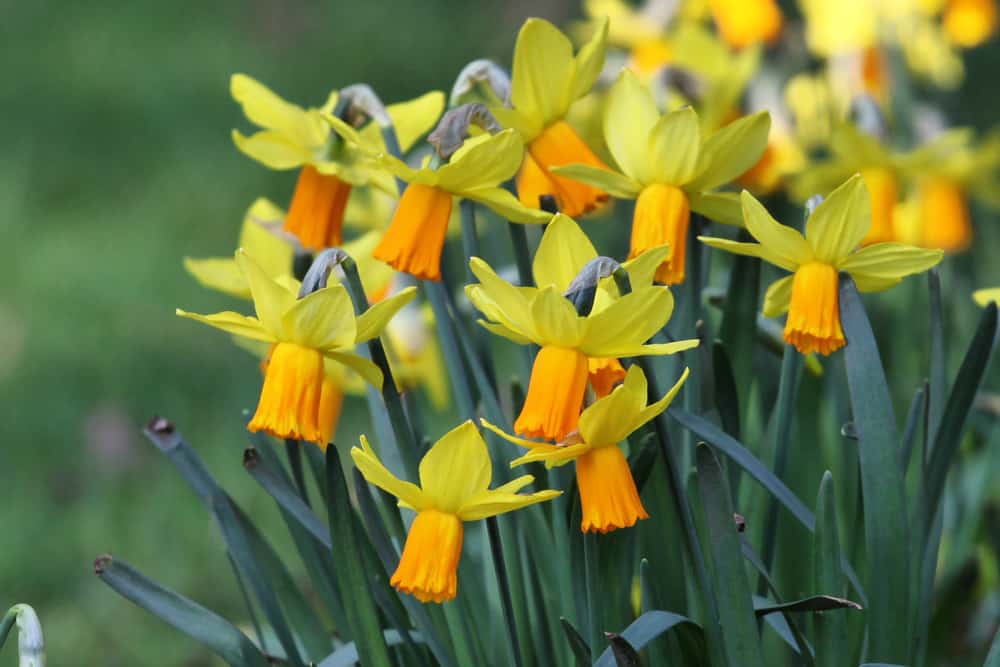
Another dwarf Narcissus variety, Jetfire is short in stature but produces large flowers for its size, dazzling across the seasons. These flowers also have an interesting shape, with exterior petals that bend back beyond 90° to highlight the vivid yellow-orange cup in the center.
These flowers may not be present for very long, appearing in early spring and disappearing a few short weeks later, but they will certainly make a statement when they stick around. Before the end of the season, remove the remaining flowers and place them in a vase for a spring-inspired cut flower feature.
5. Queen’s Day
If you looking for an almost luminous yellow daffodil determined to catch your eye in a container, Queen’s Day is your answer. This daffodil is named after a Dutch holiday celebrated every year at the end of April.
The blooms are not only incredibly bright, but they also feature an interesting shape. The center is made up of several layers of small petals, filling out the flower and creating a different look when compared to other traditional daffodils.
This is a larger container variety, growing around 16 inches tall, so it will need a slightly larger container than the miniature varieties. The strong, upright stems make this plant another contender for a cut flower bouquet.
6. Hawera
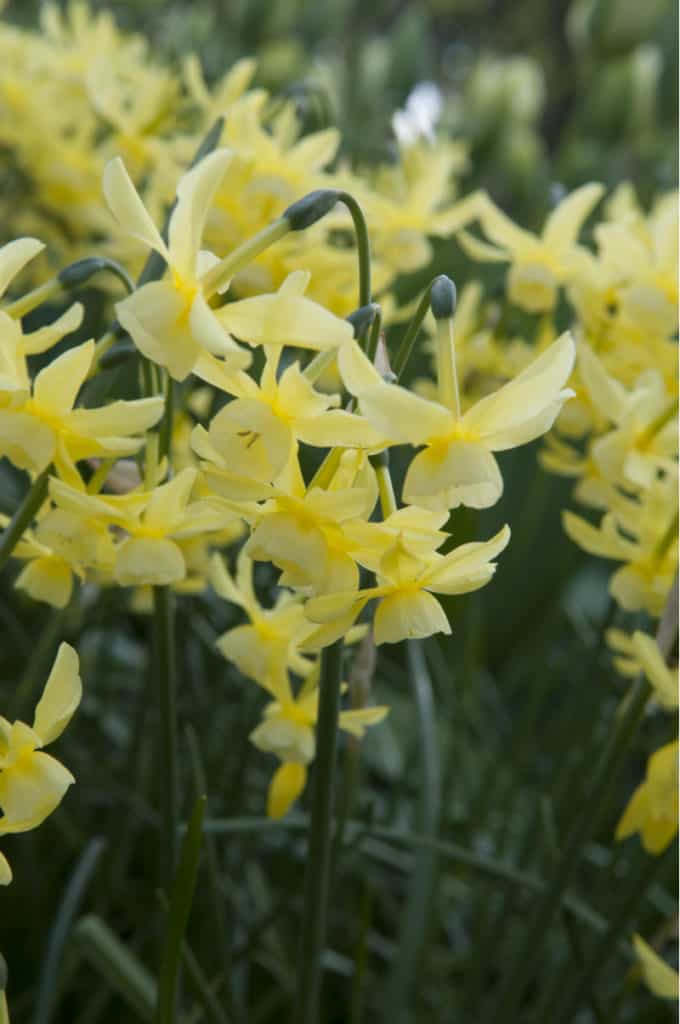
Back to the short daffodils, Hawera only grows to a tiny six inches in height, but makes up for it in blooms.
Another double award winner, this plant features around six pale yellow flowers on each stem. When planted en masse, the lemon-yellow reflexed petals (as part of the Triandrus daffodils) make a stunning statement.
This compact plant is a late bloomer, great for combinations with early-season varieties to ensure flowering across the whole of spring.
7. Peeping Tom
Peeping Tom blooms are similar to that of Hawera in color and shape. However, Peeping Tom daffodils are slightly taller, perfect for filling in larger containers or as a paired planting centerpiece.
These bulbs are vigorous growers and spreaders. They are also incredibly easy to grow, ensuring you have early spring blooms year after year. The narrow upright leaves provide the perfect base for large, impressive flowers on a plant certain to turn heads.
8. Mount Hood
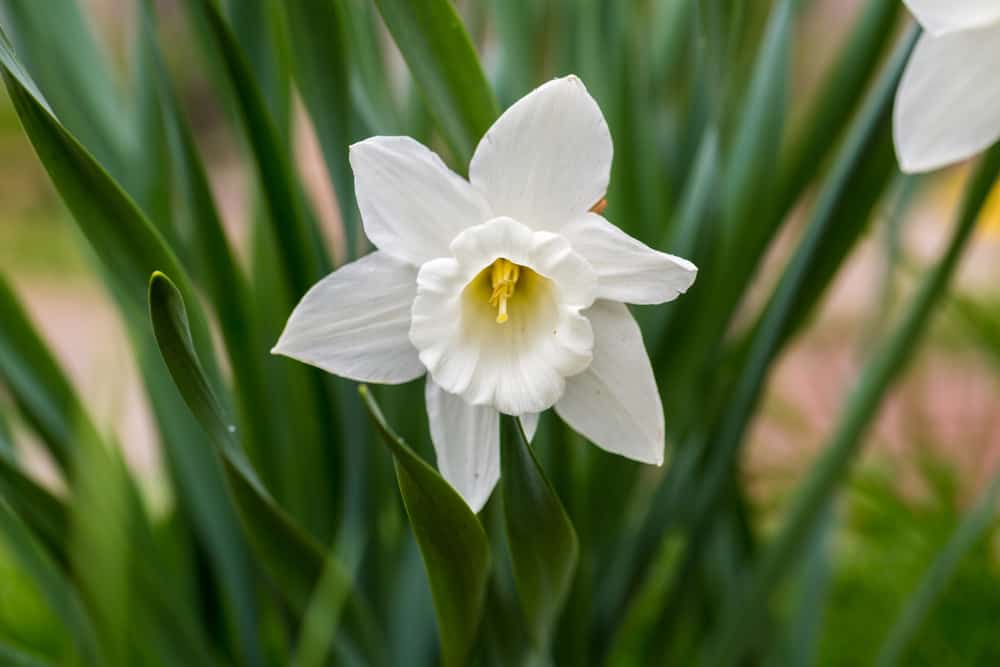
If yellow is not your color, you’ll be happy with Mount Hood. This is one of the most popular white daffodils, winning multiple awards across the globe, as well as many hearts.
The flowers are large and creamy white with hints of yellow, slowly fading to a stark white as the flowers mature. Although there is only one flower per stem, this plant blooms for a long time, leaving you to enjoy its beauty for far longer.
This trumpet daffodil reaches about 16 inches tall, perfect for companion planting in large containers for a stand-out spring feature.
9. British Gamble
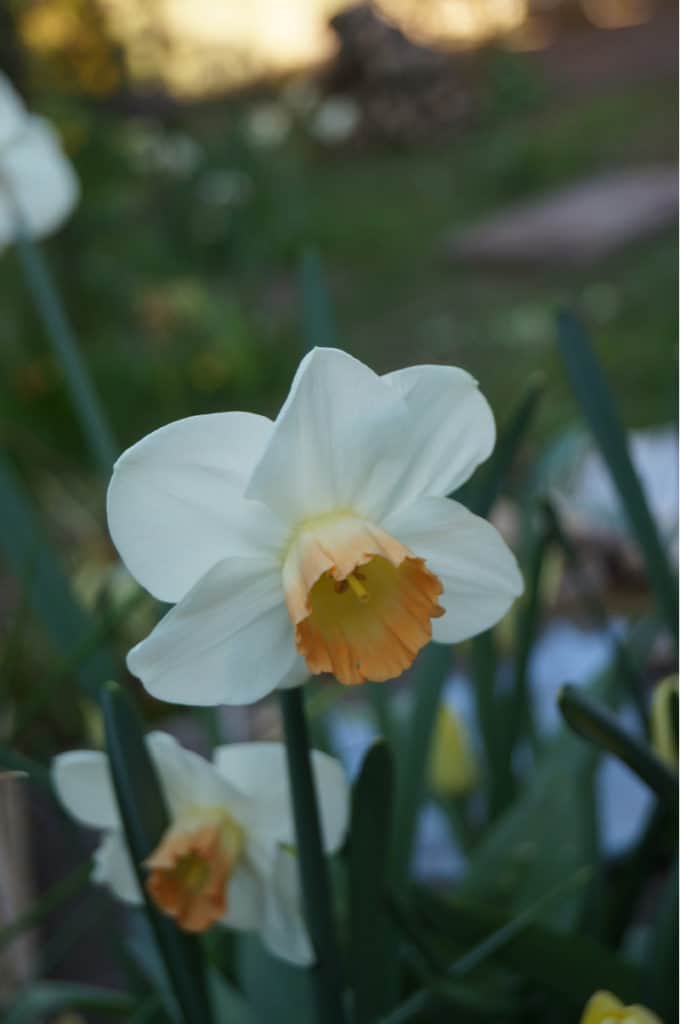
British Gamble is not as well-known as some of the other varieties on this list, but definitely deserves more recognition.
This trumpet daffodil is the tallest so far, topping off at around 18 inches. It also sports a unique color pattern – white outer petals with an incredibly large peach trumpet. This trumpet slowly changes color throughout the very long blooming season, creating continual interest.
This taller daffodil is the perfect delicate compliment to other pink spring container plants – especially low-growing ones that allow the tall stems to shine during the flowering season.
10. Geranium
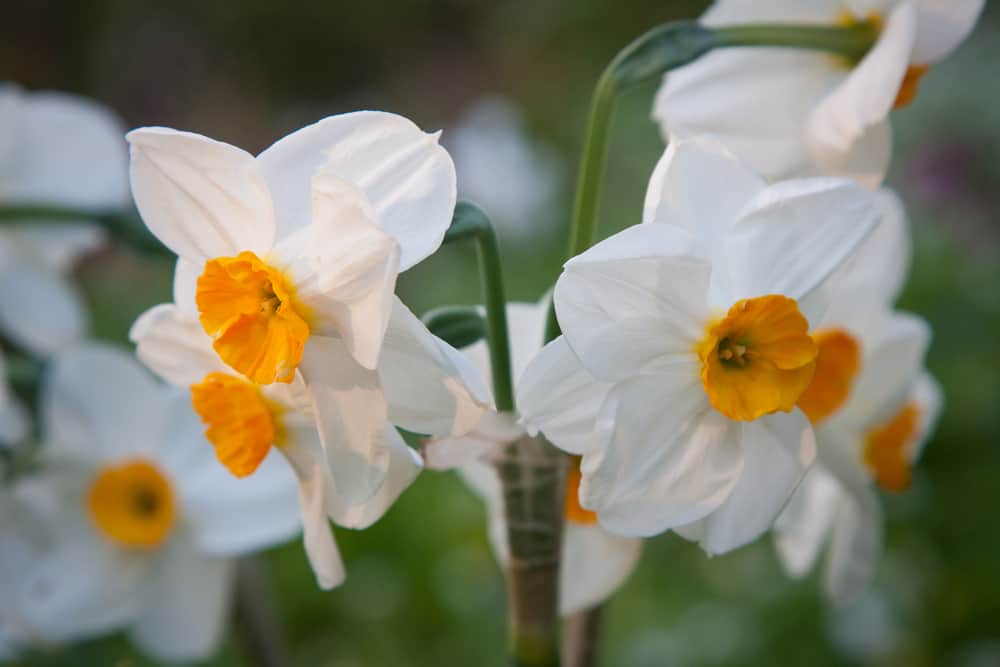
Geranium (the daffodil, not the plant) also features a contrasting cup color. Like British Gamble, the outer petals are also a bright white, but these surround an intense orange center that turns each flower into a tiny target.
Each plant produces several stems, and each stem produces multiple flowers, creating carpets of color across your containers. The flowers are also slightly scented, releasing a sweet fragrance as they begin flowering. At about a foot tall, Geranium is a larger daffodil with quite a large spread, needing plenty of container space to grow effectively.
11. Toto
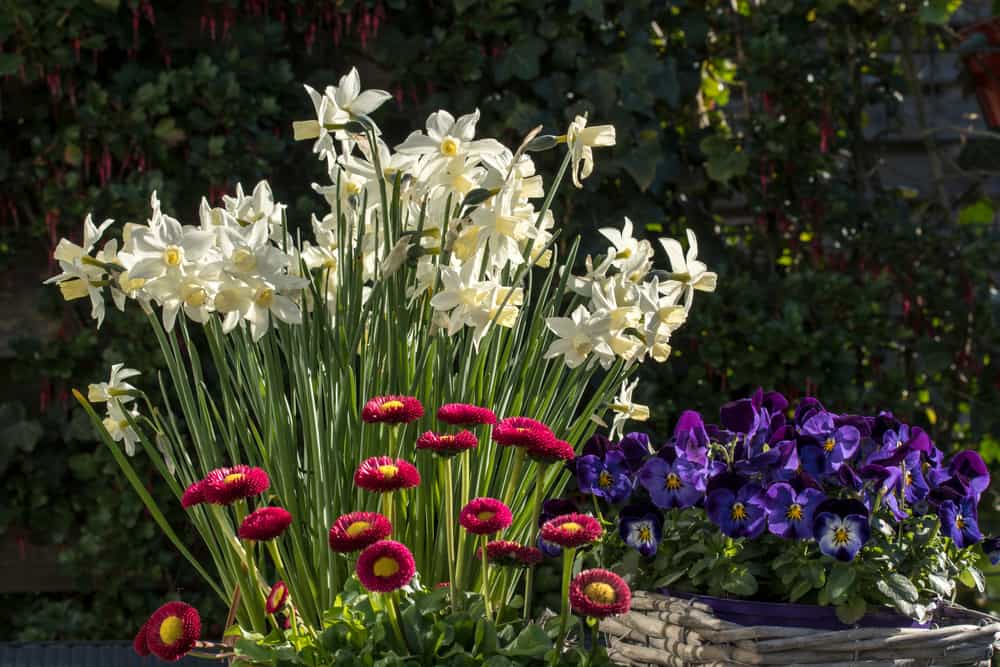
Toto daffodil flowers are a stunning creamy white that adds a touch of class to container displays.
The central cup is a pastel yellow, providing a hint of the traditional daffodil color without overwhelming the senses. The reflexed petals highlight this pastel yellow beautifully, allowing the trumpets to truly shine.
Another dwarf variety, Toto has narrow leaves and an upright growth habit and allows them to be planted closely together for a container bursting with beauty.
12. Salome
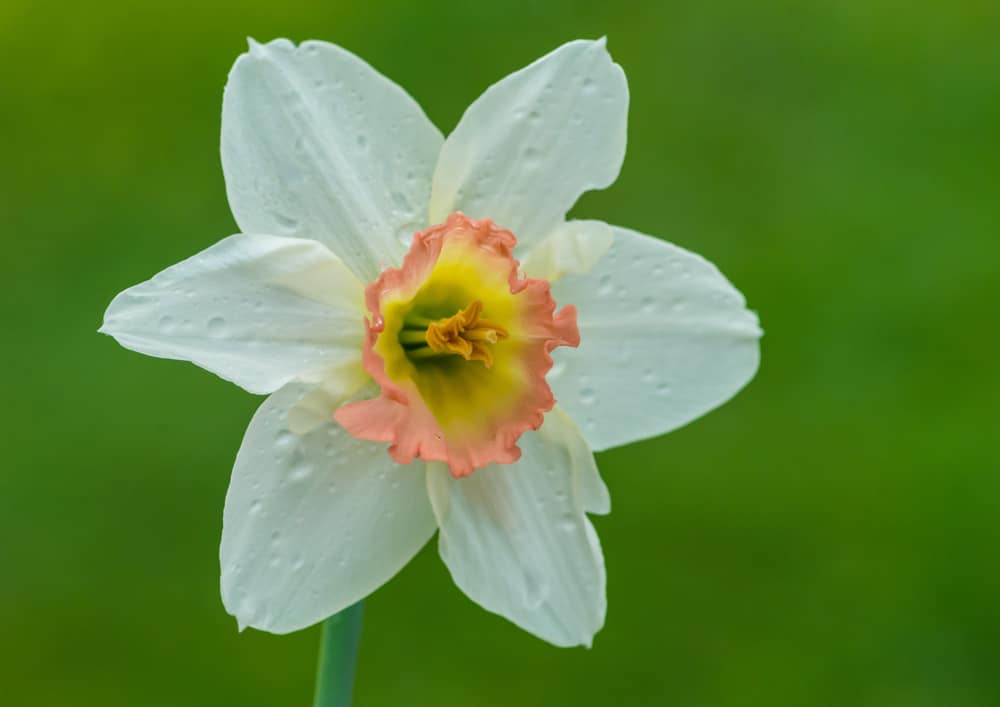
The second large-cupped daffodil on this list, Salome grows to about a foot tall. The flowers are similar in color and shape to British Gamble, with the large central trumpets an apricot as opposed to a peachy pink.
Dappled sunlight will preserve this pinkish tinge and keep the large flowers looking their best.
13. Baby Boomer
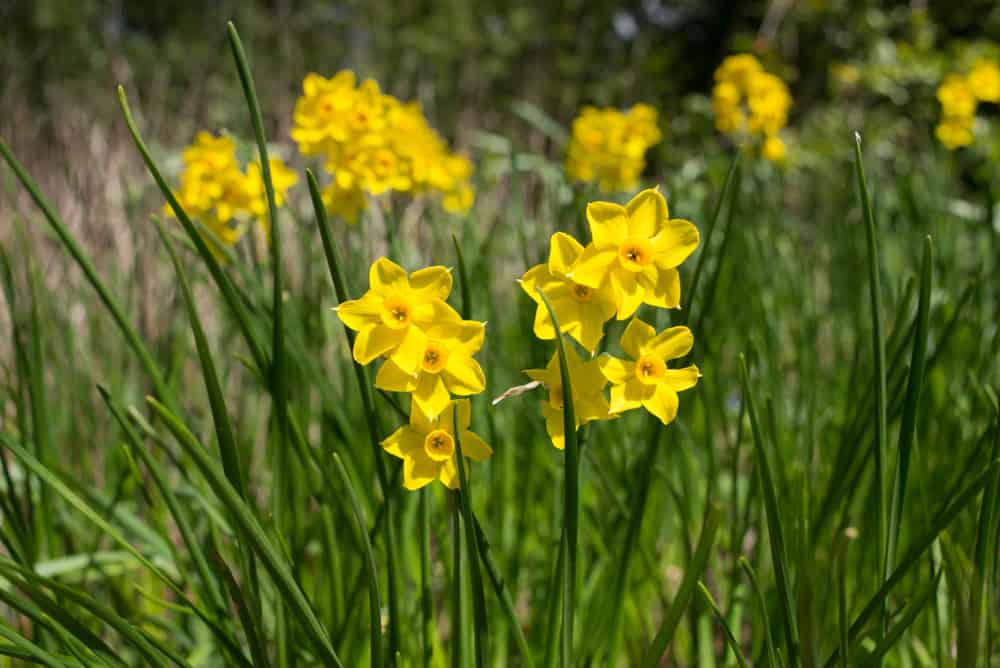
Baby Boomer daffodils pack a colorful punch. The bright yellow flowers appear in groups of up to six on one stem. This shorter variety, growing around eight inches tall, is perfectly suited to indoor container growing conditions.
The central cup is much shorter than other daffodil varieties, with a bright yellowy-orange color, creating an interesting floral shape. Its fragrant blooms and upright stems make this compact plant great for cut flower displays.
14. Minnow
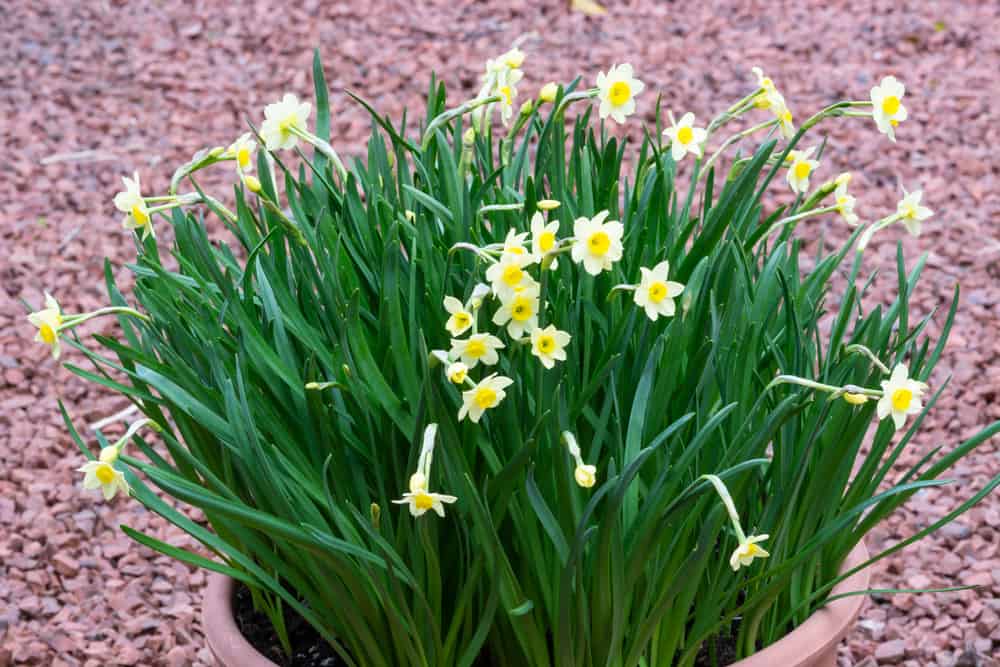
The final container daffodil on the list is remarkably similar to Baby Boomer in shape and size, only differing vaguely in color. Where Baby Boomer is covered in a captivating yellow, Minnow features creamy whitish-yellow petals with a bright yellow central cup for excellent contrast.
This small daffodil is a rapid grower, quickly spread to build a container packed with color.
If you’re lacking daffodils in your home or garden, container planting is the perfect place to start.
These fourteen daffodil varieties are proven to grow effectively under container conditions. They also come in a range of sizes, from tiny to quite tall, suiting induvial planting or flowering plant pairings.
